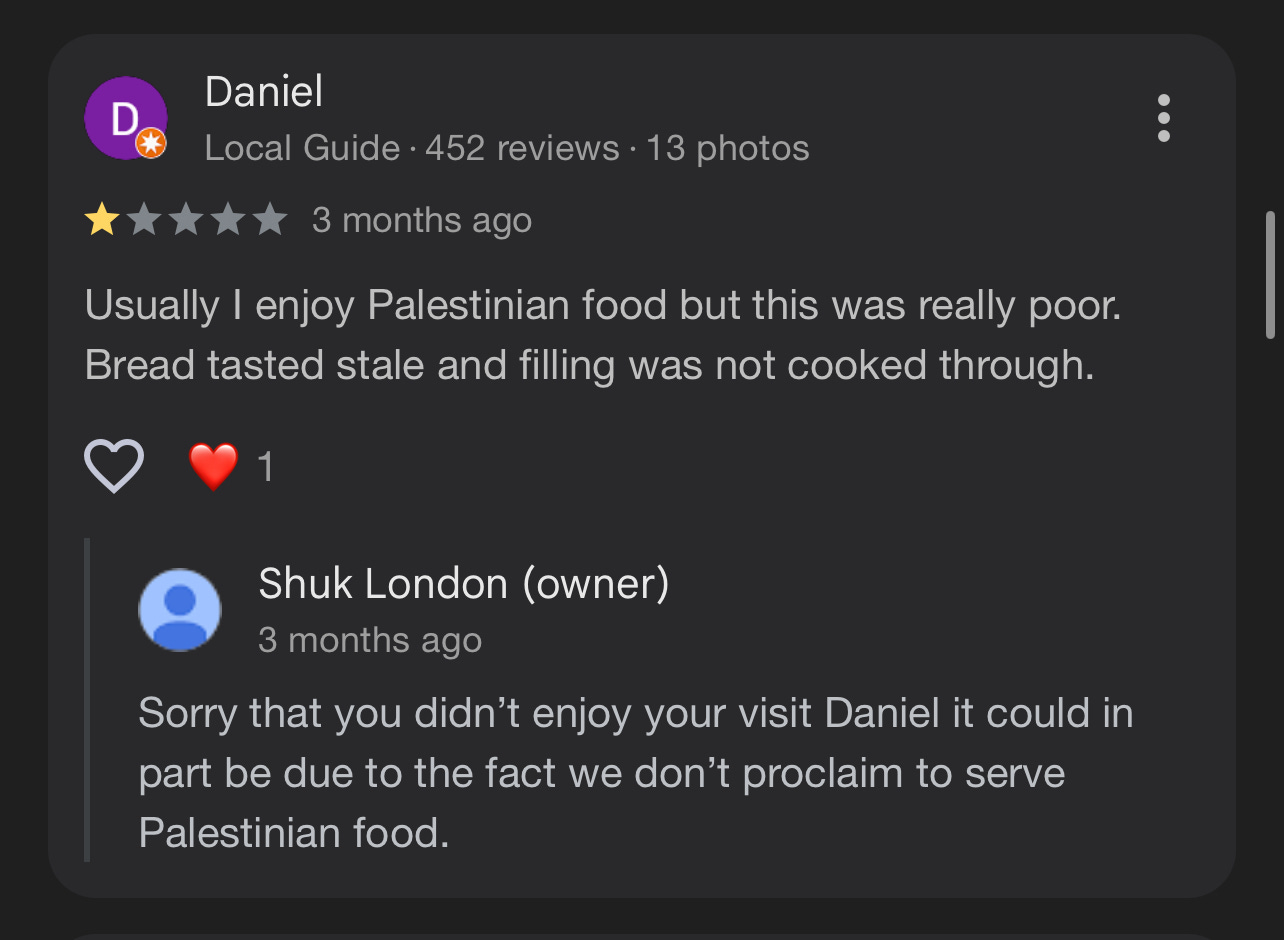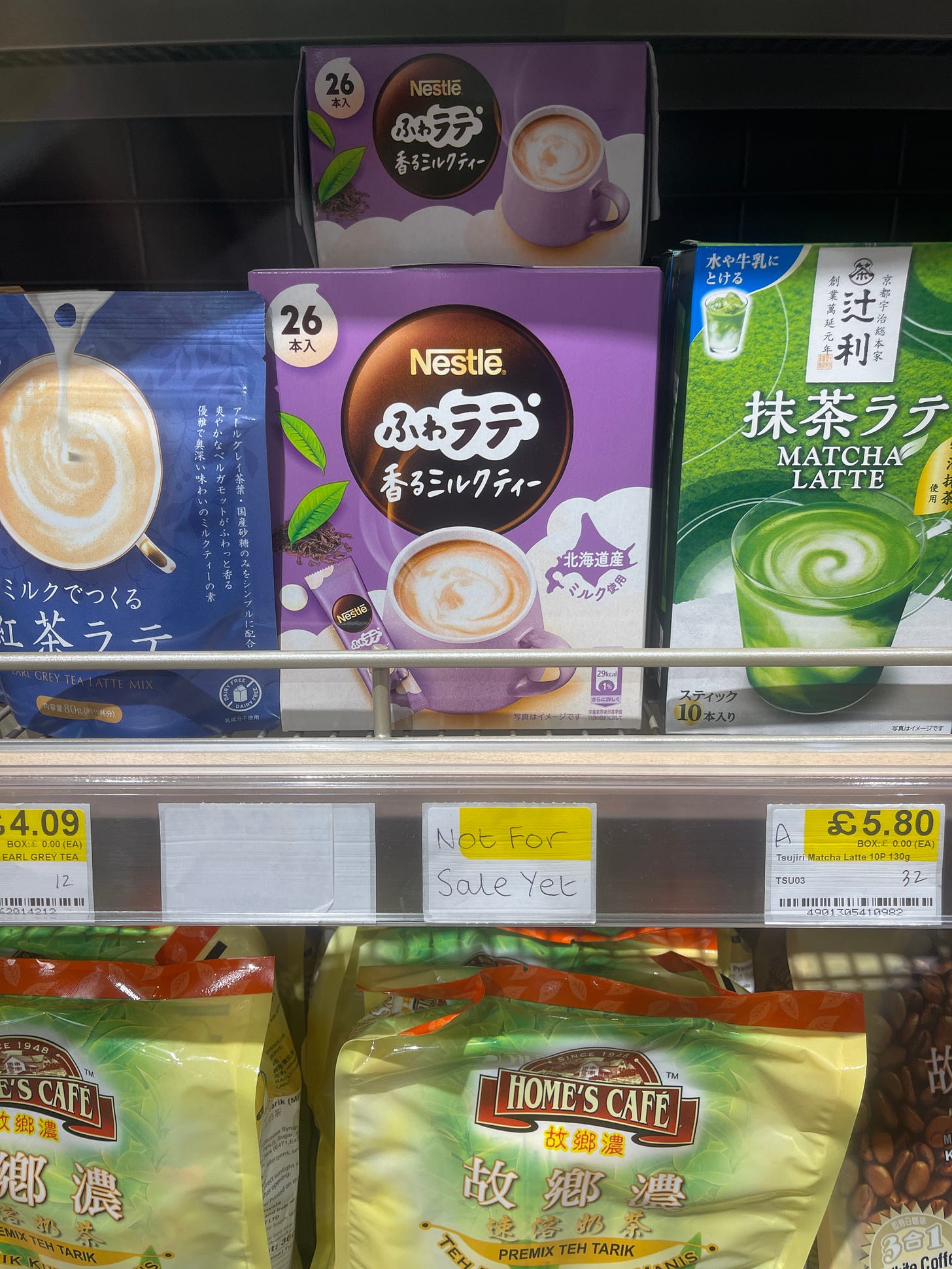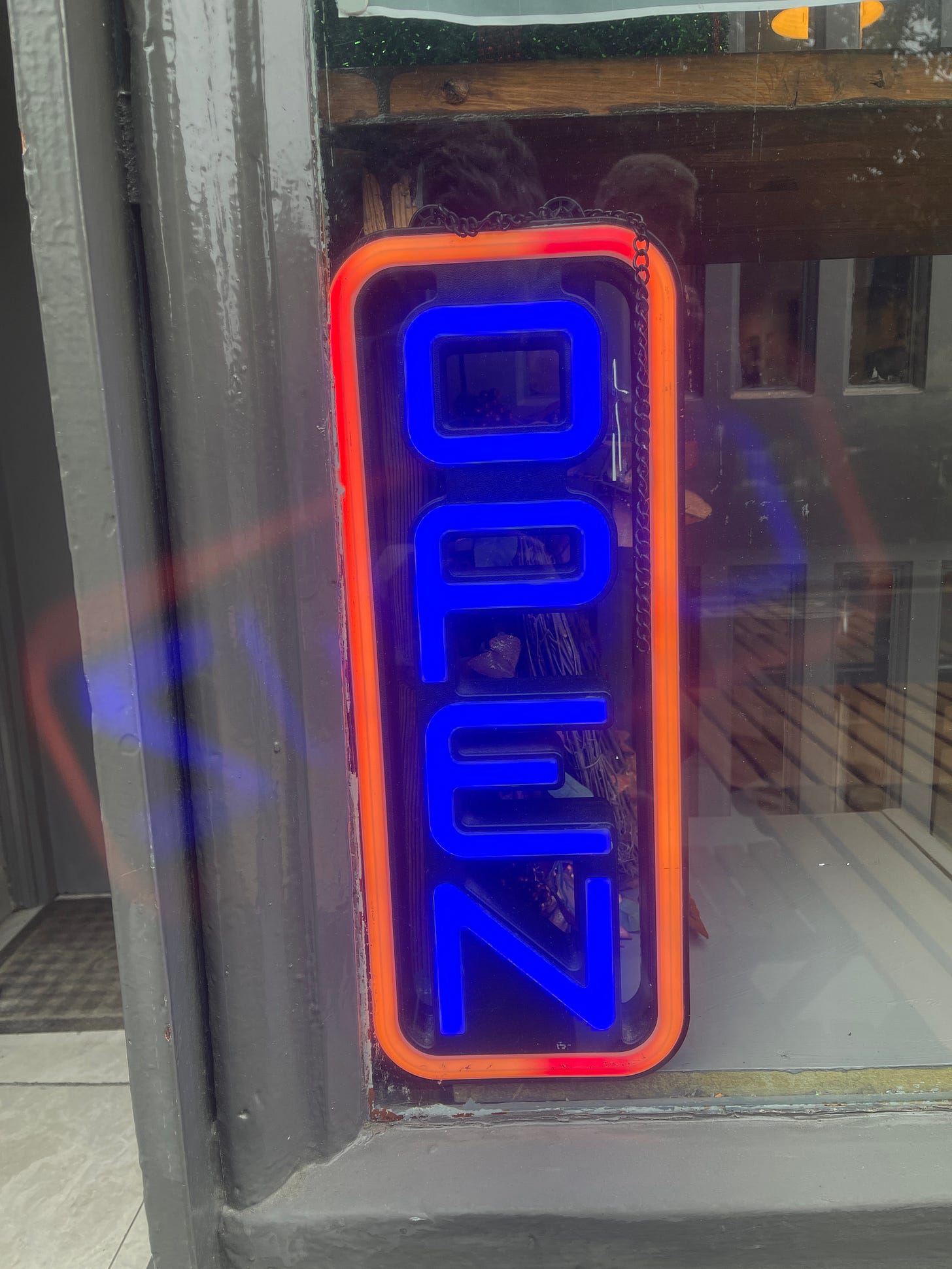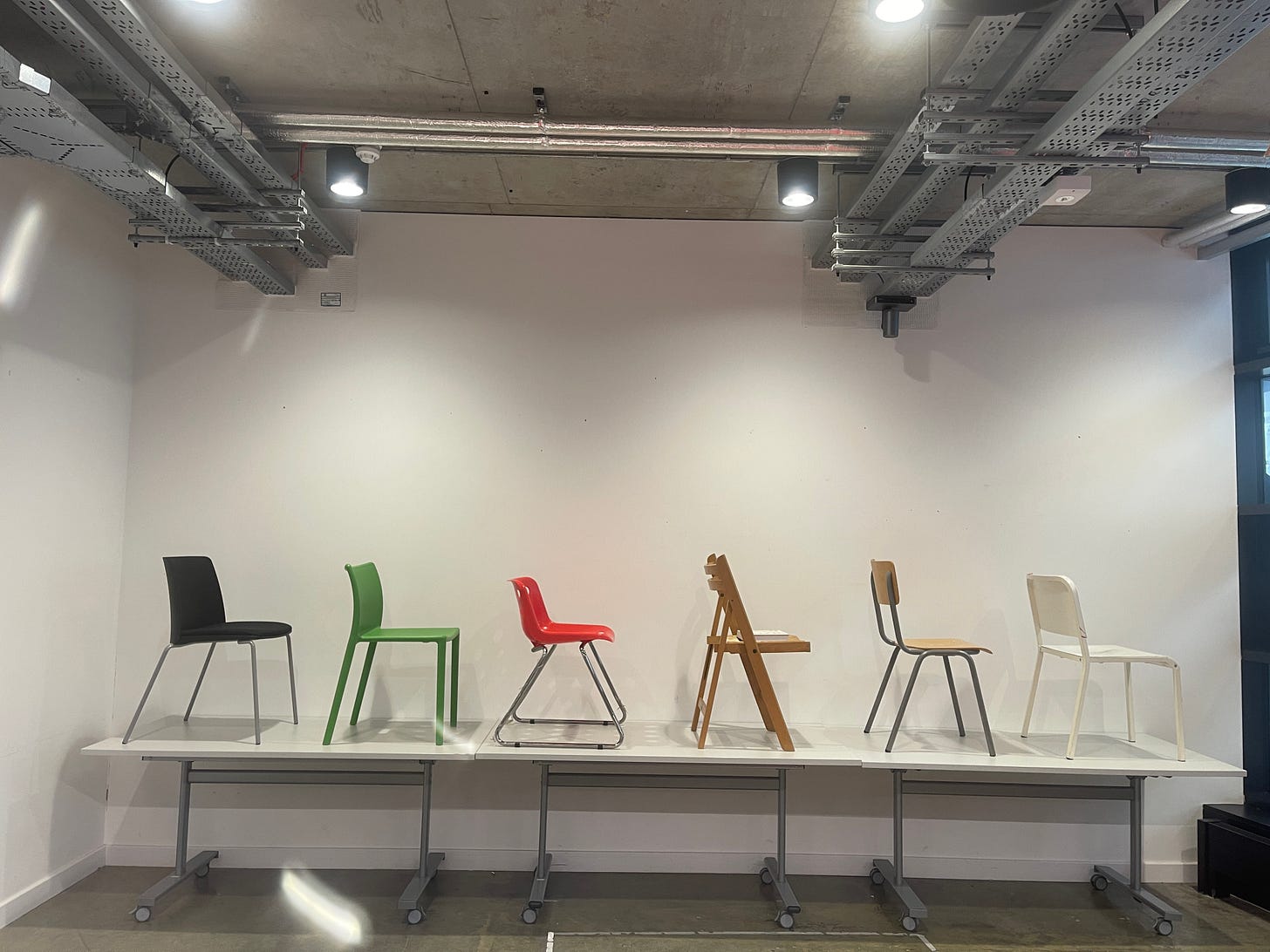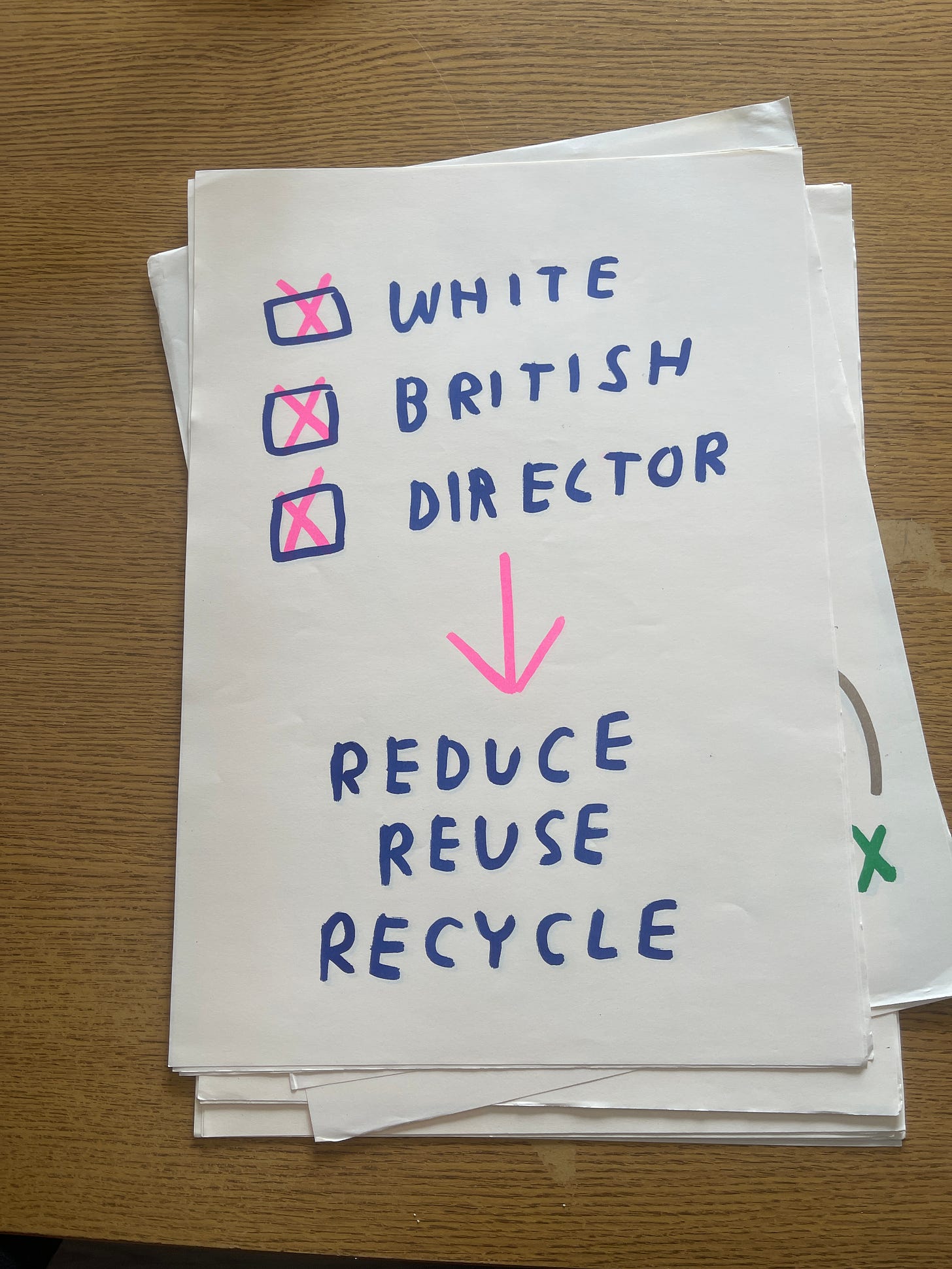Writing from the archives
Things (the personal & professional)
Design Otherwise: Transforming Design Education in the Arab Region is available for purchase online, or order it at your favourite bookstore).
The second print of Designerly Ways of Knowing is available with a new cover (big up Pali!). Order here.
Sarona and I wrote a chapter about Countless Palestinian Futures for the book Producing Palestine: The Creative Production of Palestine Through Contemporary Media. Order here.
***If you have photos from any of my book events, please do send them to me.***
Notes
You can now donate by subscribing but my posts remain completely to everyone. If you feel like you would like to donate to continue the writing, I am grateful.
Thoughts, or something like it.
Comments have been turned on.
I rarely, if ever, pitch writing to magazines. The rare occasions I have written for magazines, I was invited. I realise however, that I would like to write more, but the invitations are few, and dealing with more rejections in a job (re: academic) that involves multiple rejections in a week can be exhausting1.
A few months back, I pitched an article for a local publication, in a column titled The Hater. They rejected it stating that is too much of an uncommon occurrence for us to take on (I disagree). Rather than archiving this in things that won’t ever see the light of day, I am publishing it on The Pessoptimist.
To hell with QR codes
I first came across a QR code when adding a friend to my BlackBerry Messenger app, a now retired proprietary instant messaging software produced by BlackBerry: i.e. WhatsApp before WhatsApp. It was the early 2010s, and QR codes were becoming a popular form of directing people to websites.
At the time, not all smart phones equipped with a camera could recognise QR codes, which required an app to operate, when usability was even clunkier than it is now. Shortly after their appearance, QR codes were on their way out, because they were impractical. However, the COVID-19 pandemic and subsequent worldwide lockdowns revived this barcode symbol, making it ubiquitous and inescapable.
As a designer and scholar of design, I spend a lot of time thinking about things like QR codes, which most people willingly accept because “that's how life is.” Most bad design is acceptance of the masses who do not know or care or believe that things could be otherwise.
I dislike QR codes as much as smug cashless establishments, people with no spatial awareness, Lime bike drivers who do not obey any rules, and a myriad of other things.
Thanks to the COVID-19 pandemic, QR codes and QR code menus were given a resurgence. Even though it was proven that you could not catch the virus from a paper menu (it's airborne), we (the public) chose to avoid the science for the sake of collecting data, saving money (with an initial spend), and go contactless.
Our society is one that emphasises efficiency extensively. We've decimated services through downsizing and put added pressure on everyone to be their best efficient self. What design value systems are we promoting and what set of human needs are we responding to? QR codes do not make life easier, better, or quicker.
There are times when the QR code is so small the phone can't register it. ‘The future is seamless,’ is what we are promised. Sure, like AI is doing all the things I don’t really need it to do but not the things I need it to do. Convenient for whom? Speedy for who? Short sighted vision thanks to Silicon Valley tech bros who model the world on their needs and their limited imaginations.
Take for example my experience with a QR code menu on a recent trip to Cyprus. I was at the hotel beach, scanned the QR code on my overheating phone because it's 40 degrees outside, scroll the menu, click on a Frappe, add it to my basket, but I do not check out, instead, I close the browser because I changed my mind. Ten minutes later, the waiter comes and brings me a Frappe, which I did not order. I had to buy it because the system seems to have computed my “adding to basket” as a purchase. This is only one example, but systems are riddled with bugs of badly designed user interfaces, which I blame on the proliferation of short courses that enable anyone to become a UX designer in six weeks.
QR codes have a time and place; choose wisely and understand the audience. I once saw a series of 30 posters all with individual QR codes during a degree show. Did anyone actually go to each poster individually and click the link? Highly unlikely. Good QR use would be adding someone on an app. Menus are not one of them. They only work when your menu consists of a handful of items. QR codes require unnecessary effort that for some causes mental or physical discomfort in accomplishing their task, such as confidence in using technology, or when a QR code is too small to be scanned, the link takes an eternity to load, or it leads to a broken link.
Like so many things we have now normalised without thinking through if this is really a better way, QR code menus are a way of de-socialising both workers and restaurant consumers. We no longer feel the need to interact with a server because we are encouraged to order via the QR code and pay via the app (despite how long it takes to enter your details). QR codes remove that much needed engagement with people. After all, aren't we going to a restaurant to be served, to engage, to enjoy food, an atmosphere (or vibe), company? If one is not interested in interacting with people, then go to a fast-food establishment and use the self-checkout machines, where the restaurant operates like a vending machine. Moreover, the QR menu and cashless combo has developed several unintended consequences: like self-checkout, QR menus use dark patterns to enable features where you order additional food you think you want but do not need (example: upsizing a menu, ordering a side), and they have rendered people's arithmetic ability – including those serving you – entirely reliant on the phone calculator, usually the customer's phone calculator. I am amused at how many times the table is expected to automatically calculate the split even though the machines are fully capable of the task; just look at the way shop and restaurant workers stare at cash money when you give it to them as though it is a foreign object. The person serving you can then become anyone, because the QR code means the server is only bringing you the food.
Like the cashless trend, there is a line when the option (paperless menu) becomes an obligation, removing choice. As Rory Sutherland2 writes, “We welcome the technology at first because it presents us with a choice. But then everybody else has to adopt the technology, and we suddenly realize we’re worse off than we were when we started.” QR menus standardise menus into prefabricated interfaces that claim to be 'user friendly' and 'mobile ready'. It removes the fun of browsing menus: the overwhelming ones with too many items, spotting the typos, the badly lit pictures, the pretentious ones featuring things you might find browsing a recipe from Kinfolk. Being handed a physical menu reduces the stress of thinking about how good the internet connection is, how much battery the phone has left, and how crouching over a phone screen, zooming in and flipping through the pages is an unpleasant experience.
visual roundup of things I liked/made me happy/laugh or tsk this month.
Be well,
Danah (The Pessoptimist)
read//check out//listen//watch
In light of the above piece I shared, this edition will be about restaurants – suggestions to eat at and stay away from – something I have not suggested ever. Full disclosure: I do not leave reviews (I do enjoy reading some). I can’t stand the fact that all our interactions and good service is based on me possibly providing a good review. Some notes:
Don’t believe the hype
Lebanese Grill has queues up the wazoo and it’s not very good. Why is it so hard to get Arabic food right in London? Sauce and chicken seasoning is missing the right kick. Trust me, I grew up in Ottawa, the Global North capital of Lebanese shawarma.
I was excited to try Sandwich Sandwich, and although the portions are generous, and the staff is nice, my sandwich lacked flavour.
Similarly, Cafe Mondo opened across the street from Camberwell College of Arts, and people are raving about it. The first few bites are good and quickly gets bland. Like Arabic food in London, a good sandwich in a land of sandwich is hard to come by…
Creating hype
We had tacos at Salteñas Martin awhile back and loved it. It was good, well priced, and the service was fabulous.
I also found out what a Spice Bag is and I highly recommend this popular Irish take away dish at Paddy Wok in Deptford.
I recently got a pitch accepted so now I have to buckle up and write it!
https://behavioralscientist.org/are-we-too-impatient-to-be-intelligent

